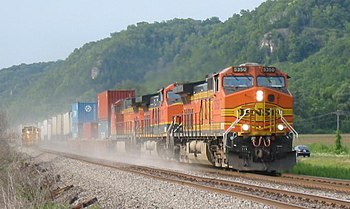All Aboard! Rail Freight Rises in Importance for U.S. Logistics

At more than $60 billion in annual revenues, the U.S. freight rail network is a high-value and rapidly changing part of the supply chain.
Early reports on railroad performance during 2013 and announcements of proposed infrastructure investment each demonstrate why logistics managers are focusing more attention on rail as a part of their intermodal transportation solutions.
Record Rail Growth
With 12.8 million containers and trailers riding the rails last year, a rise of 4.6% (Association of American Railroads) on the previous year, 2013 proved to be a record-breaker. 2006 was the previous high and the notable growth following a period of extended economic trouble is further evidence that the year ahead could be a boom year for U.S. business.
The rail freight rises have put the efficient integration of rail and road solutions high on the list of logistics priorities this year, as huge names like Home Depot move closer to rail freight facilities.
Fully one-third of U.S. distribution center developments currently underway will factor in some form of railroad connection. For supply chain planners hoping to take advantage of this rail rush, the biggest challenge may be finding space, not only on the rails with moving cargo, but also next to them to unload and move it onward.
As the country's dependence on rail freight grows, lawmakers are moving to ensure that supply keeps up with that demand.
Investing in Infrastructure
Looking to the future, U.S. Rep. Adam Smith last week reintroduced the Freight Infrastructure Reinvestment Act. Citing a vision for as far ahead as the next quarter-century, Smith stated:
"With our nation's freight expected to double by 2040, it is critical to start making investments in freight and transportation infrastructure now to keep America competitive internationally for years to come."
The legislation aims to drive infrastructure development and efficiency by introducing grants for states who propose initiatives at a local or regional level. Such a long-term focus is to be applauded given the still-fresh wounds of the economic crash and the slow short-term drag back to employment and profitability.
We see constraints across the network as it is, and with the expansion of container ships and the routes that serve them, the U.S. needs a plan in place to keep up with what we hope will be not just a surge, but a sustained level of demand. Hopefully states and businesses will rise to this challenge, making the most of the return to strength currently riding the nation's railroads.